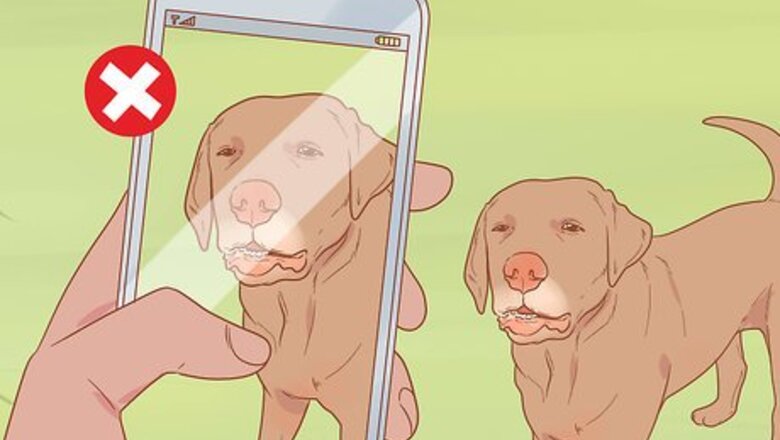
views
Working with a Stressed Animal

Remove what's causing the animal stress if possible. If you can take the stressor away, that's the best option. If you can't, move the animal away from the stressor if it's safe to do so. For instance, if you have a toy or new electronic device that's driving your dog crazy, turn it off and put it away. If your cat is hyper excited because it sees an animal outside, shut the curtains or move the cat to another room.

Take the animal to a quiet area to calm down. If the animal is very stressed, providing a quiet, calm environment may help the animal de-stress. They may just have been exposed to too many stimuli and providing a quiet place decreases stimuli. For instance, if your bird is very stressed because people are over, try moving its cage to a back room for a while.
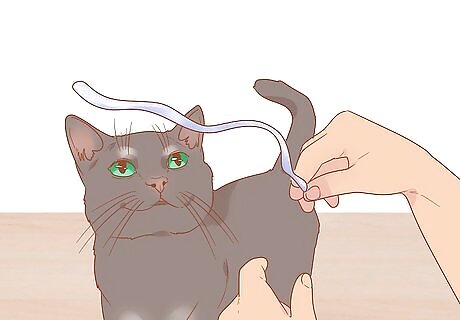
Provide a sense of normalcy if you can. Animals generally like routine and structure, so if you can help bring a sense of normalcy, it will help calm down your animal. For instance, with a dog, telling it to sit or stay can actually be very soothing, as those are rules it knows and performing the task makes it feel normal. For cats, you might play with one of their favorite toys or offer it a favorite treat.

Pet your animal a little and use your voice to calm your animal. Some petting is fine but don't overdo it. If you do, that confirms something is wrong to the animal, as it will likely sense your anxiety. You can also try talking in a calm, soothing voice. Just tell your animal what a good pet it is and that everything is going to be okay.
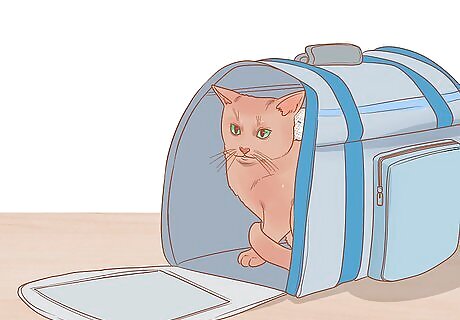
Move your animal in an appropriate carrier. For instance, get a small animal box if you need to transport a hamster, gerbil, or other little critter to the vet. They'll feel safer when being transported in an appropriate carrier, and you know they will stay safe and won't escape. Cats prefer to be in carriers where they aren't exposed. That way, they won't feel vulnerable to predators. If you're taking your cat to the vet or transporting it for some other reason, always opt for a carrier that provides a cover. If your carrier doesn't have a cover, you can put a light blanket over part of it. Your cat should still be able to see out, however. When you set the carrier down, try to put it in a high place, as cats prefer to perch up high so they can see.

Encourage animals with treats. Most animals are food-motivated, so if your animal is stressed, a treat may help calm it down. In addition, if you need to move the animal somewhere, a treat can provide an incentive for them to get moving. For instance, if you're having trouble getting your dog to walk on a leash at the vet's, a treat may help motivate it.
Helping Animals during Storms and Fireworks
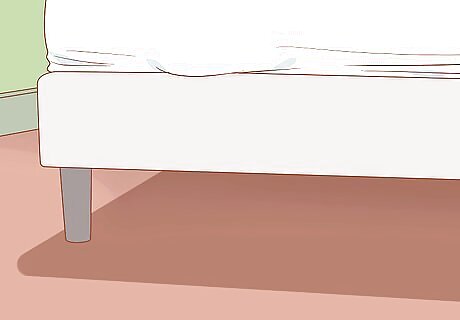
Give the animals a place to hide. Many animals want a secure place to hide when the weather gets stormy outside or when there are loud noises. You might put a blanket in a closet, for instance, or let your cat crawl under your bed. Some dogs like to hide in the bathroom during a storm, possibly because they feel the electricity in the storm and these places are less likely to shock them. If you have outdoor animals, you may want to bring them into the garage or make a little shelter for them outside. For larger animals, like horses, make sure to bring them into the barn when you can.
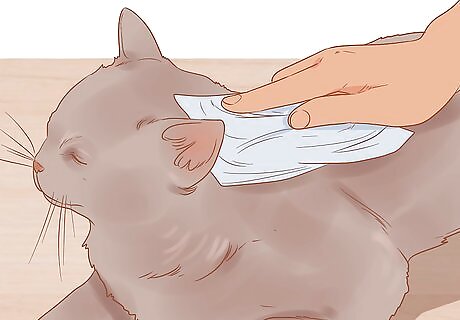
Try rubbing down animals with an unscented anti-cling dryer sheet during storms. Some animals, dogs, in particular, are affected by the increased possibility of static shock when storms are in the area. It may make their skin feel a little twitchy. Rubbing them down with an anti-cling sheet will help dissipate the static electricity, making them feel more comfortable. Some dogs also like anti-static jackets. Unscented sheets are best, as the heavy scents may irritate your dog's skin and nose.
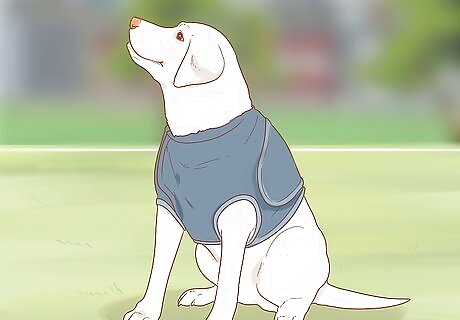
Consider a thunder shirt for your dog to alleviate anxiety. Some dogs benefit from wearing one of these shirts. One kind is basically a stretchy shirt that fits tightly, while the other is strapped on, placing pressure on certain areas. For some dogs, it feels like a hug and lowers their anxiety levels. Act as normal as possible during the storm or fireworks so the animal sees that you’re calm and there’s nothing to worry about. If you act anxious or worried, the animal will respond the same way. You can find these shirts online or at most pet stores. Make sure to get one that fits your dog well, as it should be somewhat snug.
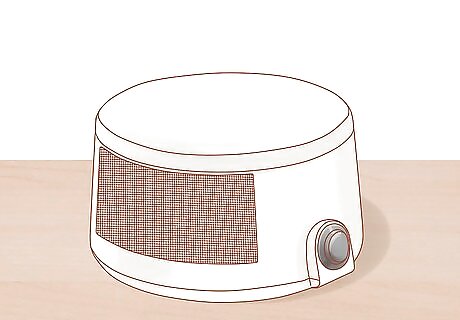
Provide white noise in the space the animals choose to hide. White noise machines can help drown out the sounds of thunder and fireworks that are making the animal more nervous. You can purchase sound machines specifically for this purpose, though even a radio may help. You can also download apps on your phone that will produce white noise.
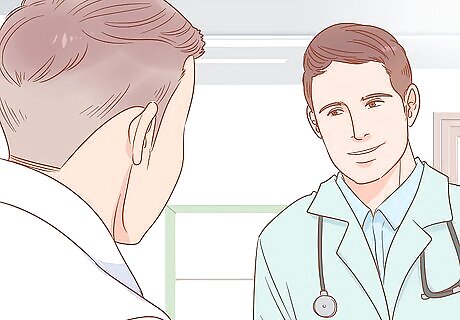
Ask your veterinarian if medications are appropriate. Some animals may never be able to calm down during a storm or fireworks display. If they're destructive and/or in danger of harming themselves, medications to help them calm down may be appropriate. Your vet can tell you what kinds of medications are appropriate, and you can give it to your animal if you know a storm is approaching. For some animals, just a dose of diphenhydramine (Benadryl) may be helpful but talk to your vet about appropriate dosing. Try pheromone therapy, such as Adaptil for dogs and Feliway for cats.
Adopting and Befriending a Nervous Pet
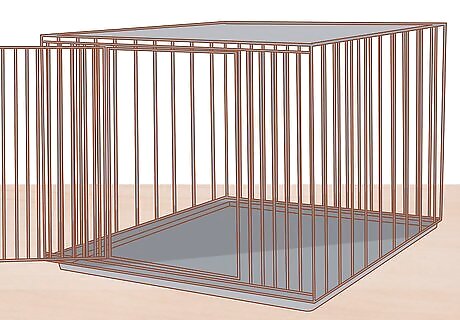
Give the animal a safe space to go. When bringing home a dog, for instance, provide a crate or a small room for it to make its den. Make sure the crate is big enough for the dog to stand up and turn around in. For a cat, confine them to one room in the first couple of days to help ensure it feels safe. Open the carrier and let it decide to come out on its own in the room. Once it feels safe in the small space, it can explore more of your home. Other animals like safe spaces, too. For instance, small animals like rats, mice, and hamsters like little igloos and other hidey holes in their cages they can curl up in!
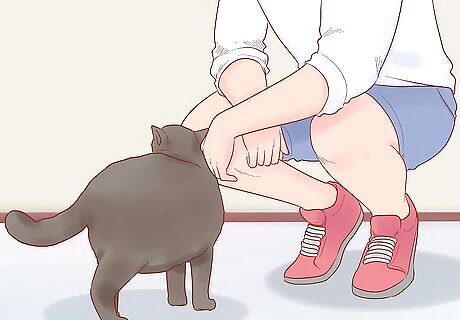
Spend time with your new animal to help it adjust. One of the best ways to decrease your animal's nervousness is to slowly introduce yourself to it. Sit on the floor in the same room with it. Let it come over to investigate you before you ever try to pick it up. Keep sessions short if your animal seems stressed by them. For instance, you can visit your cat's room a few minutes at a time throughout the day. Slowly, it will get used to you coming in and sitting nearby, and it will come over to check you out. Avoid making direct eye contact with the animal since it could appear threatening. Get down onto the animal’s level so you appear less threatening.

Offer affection and treats as the animal gets more comfortable. If your animal comes over to visit you, see if it will let you pet it. Gently stroke its back, and if it likes it, you can try stroking its head. If it backs away, try again another time. Treats are a good way to get an animal to come see you. You can offer a bit of all-chicken baby food on a spoon, for instance, and both dogs and cats will come to see what you have. For other animals, pick treats appropriate to their species.
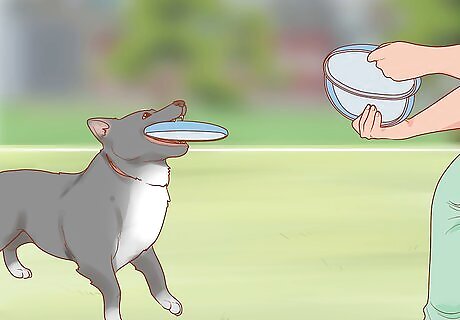
Play with your animal to encourage bonding. Playing is a great way to engage your animal. Use appropriate toys to get it to come over and say hello. For instance, try string, feather, or wand toys with cats, who will come play if you wiggle one back and forth. For dogs, try balls or rope toys! Smaller animals also enjoy toys. Try bells or ball toys for birds, for instance.
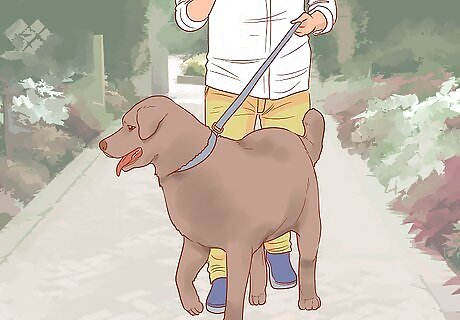
Provide the animal with exercise. Exercise can help humans with stress, and that's generally true of animals, too. You may not be able to exercise your animal if it's very, very stressed, but providing it with regular exercise can help lower its stress levels overall. For instance, take it on walks or play with it in your home to get it moving.
Reducing Separation Anxiety
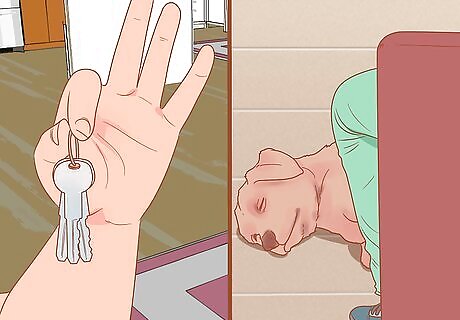
Reduce stress by taking away departure cues. That is, when you put on your coat, pick up your bag, or grab your keys, your animal knows you're leaving, and it may get stressed. To help take the stress out of these cues, perform the actions at random times without leaving, and your animal won't associate them with that particular action anymore. For instance, go jingle your keys and then sit back down again. Another time, put on your coat and go do something in the house for a bit. Take it off when you're done.

Downplay when you leave and return. If you make a big deal out of saying goodbye and hello, that will likely stress your pet out more. If you're overly anxious about it, your animals are going to pick up on that. Instead, just give it a calm "goodbye" when you leave. When you return, don't pet your animal until it calms down from its initial excitement. Both cats and dogs get separation anxiety!

Use shorter absences to show your animal you'll return. Try very short absences, such as walking to the mailbox or just going outside for a few minutes. Go out several times in just a couple of hours to let your animal know that you'll return. These short absences can help your animal build up trust and tolerance for longer ones. Try offering a favorite toy when you leave to help reassure the animal. Only return to the room when your animal is calm to reinforce desirable behavior.
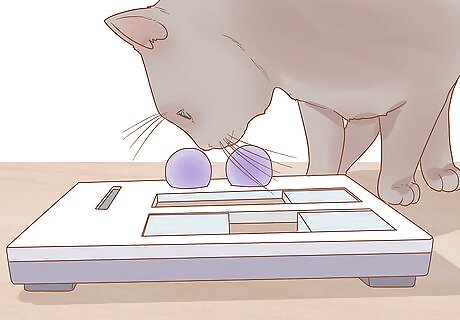
Give the animal a long-lasting treat in a puzzle to enjoy when you leave. Offer a treat using a puzzle toy, for instance, and your animal will enjoy playing with it for 10-30 minutes. If you do this every time you go away, your animal will come to associate you're leaving with happy things. For instance, with a dog, try a puzzle toy with something tasty in it, like cream cheese. For a cat, try a puzzle toy with commercial treats or all-chicken baby food. With a bird, you could use a puzzle toy with one of their favorite treats, which can depend on the bird.

Provide clothing that has your scent on it. Give your animal a piece of your clothing that you've worn without washing it, such as a shirt or a pair of pants. They'll take comfort from the scent while you're gone. This works best with cats and dogs and sometimes even other furry animals like rabbits. However, it likely won't work as well for animals like parrots. Keep in mind, the clothing may get destroyed, so don't choose something you'd be heartbroken to lose.
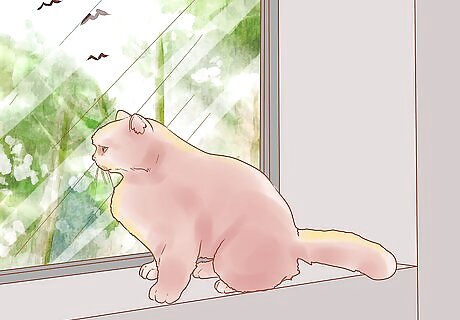
Confine the animal to a smaller, safe space if they're destructive. Put the animal in a single room with a window where there's not much to destroy. Make sure to provide water, food, and litterbox (as needed) and plenty of toys to keep them distracted! Also, make sure there's a comfy place for them to sleep.



















Comments
0 comment